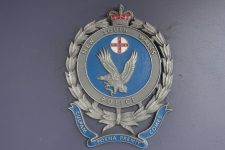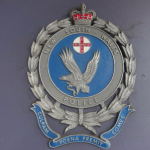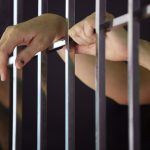NSW Police Are Targeting Aboriginal Youth Under a Secret Watchlist

Recently released NSW police data reveals that Aboriginal children are 18 times more likely than non-Aboriginal children to be targeted by police on a secret watchlist, which sanctions officers to subject listed children to a form of intensified policing.
Currently, there are more than 300 kids targeted for increased surveillance by the NSW police Suspect Target Management Program (STMP). Half of those on the list are Aboriginal youths, and the youngest child subjected to this extra attention is only nine years old.
NSW Greens MLC David Shoebridge obtained the police data regarding the program that he’s branded as “racist policing, pure and simple,” under the provisions of the Government Information (Public Access) Act 2009.
These figures also reveal that police are targeting Aboriginal children at a younger age, Mr Shoebridge outlined. And he also made clear that there’s something “seriously wrong when police are placing dozens of children aged 9 to 13” on a blacklist.
A secretive program of harassment
The STMP was launched by NSW police back in February 2000. It’s managed internally by the department, no specific legislation has been enacted to govern its operations, and the quantitative risk assessment tool used to assess potential targets is unavailable to the public.
The program permits any police officer to nominate individuals as possible targets. And it’s not just past offenders who are being placed on the STMP, as it allows for youths who police merely consider have the potential to commit crimes in the future to be subjected to it.
Once on the list, targeted children are then repeatedly stopped and searched by officers, sometimes dozens of times a year. And on top of this, STMP targets are also regularly visited at home by police, regardless of which type of offence, if any, they’ve committed in the past.
Individuals on the STMP are not informed why they’re on it, and nor are they able to find out how they can get off the list.
“This is a system that is almost designed to fracture relationships between marginalised young people and police,” Mr Shoebridge told Sydney Criminal Lawyers®. He added there’s no evidence that “repeatedly harassing young people with constant stops, questions and searches in fact reduces offending.”
Institutionalised racism
According to Mr Shoebridge, by actively targeting Aboriginal children, NSW police are directly contributing to the continuation of the overrepresentation of First Nations people within the state’s criminal justice system.
The NSW Greens Aboriginal justice spokesperson outlined that only 5.6 percent of kids in NSW are Aboriginal. However, the police data shows that 51.5 percent of the more than 400 young people targeted by the STMP between December 2015 and December last year are Indigenous.
It’s well understood that once an individual comes into contact with the criminal justice system, it’s more likely they’ll come into contact with it again. So, the STMP is ensuring that a disproportionate number of Aboriginal people will be incarcerated for another generation.
NSW Bureau of Crime Statistics and Research figures show that last December there were 3,136 Indigenous adults incarcerated in NSW prisons, which accounted for 24 percent of the prisoner population. This is despite Aboriginal people making up only 2.9 percent of the state’s populace.
And Shoebridge asserts that there’s a racist streak in NSW police culture. “If the law doesn’t include race, the policy doesn’t include race, but the practice of policing sees Aboriginal children 18 times more likely than non-Aboriginal children to be targeted, then the problem is police practice.”
A law unto themselves
The STMP first came under public scrutiny in October last year, when the Youth Justice Coalition released its Policing Young People in NSW report. The researchers obtained data from five NSW police local area commands (LAC) for the financial years 2013-14 and 2014-15.
The largest group targeted over those 24 months were Indigenous people, who made up 54 percent of those on the list. While in 2014-15, 60 percent of STMP targets in Redfern LAC were Aboriginal, even though First Nations people only made up 2 percent of the local population.
The report documents a series of case studies where NSW police officers have exceeded their powers whilst dealing with STMP targets. One such case involved a 14-year-old boy, who’d been stopped and searched 28 times, despite having no prior charges to his name.
Report researcher Camilla Pandolfini said last November that “in three of our cases studies, the young people involved had been stopped and searched, and the court has found that the police didn’t have the requisite reasonable suspicion.”
Blacklist under investigation
In a March submission to a parliamentary oversight committee, the new NSW police watchdog outlined that it commenced inquiries into the use of the STMP on 10 to 17 year old children late last year, following the release of the Youth Justice Coalition report.
The Law Enforcement Conduct Commission (LECC) has concerns over the increased monitoring of children and youths, especially in regard to the civil protections provided by the Law Enforcement (Powers and Responsibilities) Act 2002: the chief legislation governing police powers in NSW.
The LECC has initiated five investigations into complaints concerning young STMP targets, who have allegedly been subjected to unlawful police conduct. And the commission expects to commence further investigations due to the number of allegations levelled against the program.
Pure and simple
Mr Shoebridge warns that the STMP is liable to result in the opposite of its stated aim. “Far from reducing offending, repeated police harassment is most likely to cause resentment of authority and the conditions in which more serious crime may be committed,” he explained.
The social justice activist is calling on NSW police minister Troy Grant to bring a halt to the STMP and insist that NSW police commissioner Mick Fuller provide a full report on the “damaging and biased” police program.
Indeed, such a report might uncover the prejudice latent in NSW police attitudes and practice. “This is racist policing,” Mr Shoebridge concluded. “It may well be an unconscious bias, but the bias is so extreme that it can’t be described as anything other than racist.”







